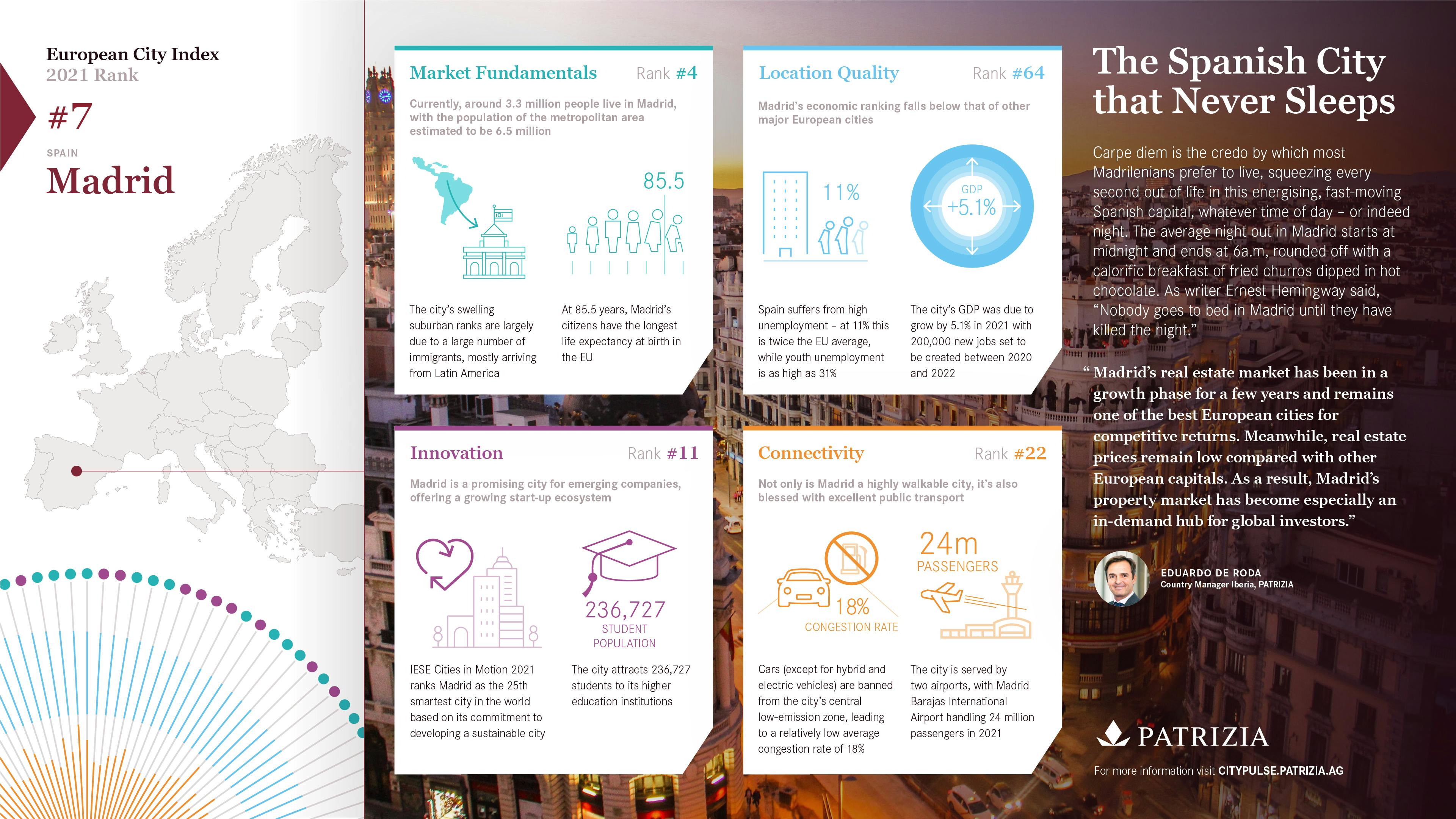Madrid: From Historical City to Innovation Capital
Madrid, Europe's fourth-largest city, has recently emerged as a critical player on the European stage thanks to its innovative and sustainable urban planning initiatives. While it does not have the ancient history of cities like Paris or London, Madrid has rapidly developed into a cultural and economic activity hub. Its transformation into an innovative capital, supported by projects like Madrid Nuevo Norte, has strengthened its economy and real estate market, making it an increasingly attractive destination for global investors and professionals.
When one thinks of Madrid, images of grand boulevards, historic landmarks, and lively street scenes often come to mind. Known for its rich history and vibrant culture, Madrid is traditionally associated with art, politics, and commerce. However, beyond its cultural allure, Madrid is rapidly emerging as a significant player in the world of technology and innovation, making it an increasingly attractive destination for property investors and tech professionals.
Rising Tech Scene Makes Madrid a Prime Investment Destination
Madrid's tech scene is not just growing, it's booming. The city has swiftly risen to become one of the leading innovation hubs in Europe. With a thriving start-up ecosystem and support from robust public and private initiatives, Madrid is on a trajectory to become a global centre of technological excellence. The emergence of tech-focused districts, such as the Madrid Science & Innovation District (MaSID), is a testament to the city's commitment to tech innovation.
The capital's appeal extends beyond tech. Madrid is home to some of Europe's top universities and business schools, making it a magnet for international students and professionals. Compared to other major European capitals, the city's relatively affordable cost of living and high quality of life makes it ideal for young professionals and families.
Madrid's commitment to sustainability and urban development is not just a trend, it's a transformation. In recent years, the city has made significant strides in this area, with initiatives like Madrid Nuevo Norte, one of Europe's most significant urban regeneration projects. These efforts are enhancing the city's liveability and presenting exciting opportunities for property investors looking to capitalise on the city's long-term potential.
Madrid's real estate market is also evolving, with a growing trend of converting old industrial and commercial spaces into modern residential and mixed-use developments. The demand for high-quality housing continues to drive the market, particularly in well-connected and revitalised areas.
Reflecting its growing prominence, Madrid consistently scores well in global innovation, liveability, and competitiveness rankings. The city is becoming a key player in the European tech landscape, attracting increasing levels of investment and talent from across the globe.
Madrid, with its unique blend of tradition and modernity, is a city that captivates. As it continues to invest in its infrastructure, innovation capabilities, and sustainability efforts, Madrid is poised to strengthen its role as a leading European capital of innovation and a prime destination for property investment. This blend of old-world charm and cutting-edge innovation makes Madrid an attractive environment for those looking to live, work, and invest in one of Europe's most dynamic cities.
Madrid’s real estate market has been in a growth phase for a few years and remains one of the best European cities for competitive returns, particularly among property investors looking for rental yields, which average about twice as high as those in London and Paris. Meanwhile, real estate prices remain low compared with other European capitals.
Eduardo de Roda, Country Manager, Iberia, PATRIZIA
PATRIZIA City Snapshot


5
Madrid’s Market Fundamentals Ranking
Currently, around 3.2 million people live in Madrid, with its population due to expand by 5.8% by 2028, according to PATRIZIA’s Index. What distinguishes the Spanish city is its expanding urban agglomeration population – at around 6.5 million, this is the second largest in Europe, lagging only behind Paris. The city’s swelling suburban ranks are largely due to a large number of immigrants, who mostly arrive in the Spanish capital from Latin America, particularly Venezuela. Its old-age dependency (OAD) ratio of 33% is notably higher than in most other European cities, apart from Rome, as robust Spaniards continue their course to overtake the Japanese and become the longest-living people in the world, owing to their healthy diet, according to recent research.




